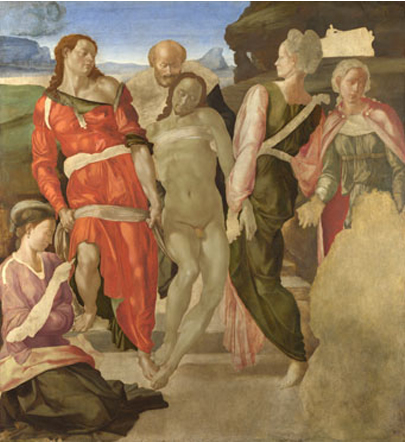Despite recent claims to the contrary, Andrew Graham-Dixon believes that The Entombment is not only a Michelangelo, it is also the perfect expression of the artist's unique synthesis of sensuality and spirituality
Few great paintings can have come quite as close to destruction, and survived, as Michelangelo's Entombment. Its narrow rescue, by the Scottish painter and photographer Robert Macpherson, deserves to be better known - not only because it is so curious and romantic, but also because it records one of the most eloquent compliments ever paid to the power of a picture.
Macpherson, we know from the autobiography of his close friend James Freeman, first came across The Entombment while looking through a job lot of pictures which had just been sold cheaply at auction in Rome in 1846. ''Mac had carefully observed among these paintings,'' Freeman tells us, ''a large panel over which dust, varnish and smoke had accumulated to such a degree as to make it difficult to distinguish what it represented. There was, however, something in its obscured outlines which made an impression on him, and haunted his recollections of it. Knowing the dealer who had bought the pictures, he went a few weeks later to his shop, and, while looking at some other things, asked carelessly, 'What is that old dark panel there?' 'Oh, that,' replied the dealer, 'is good for nothing, beyond the wood on which the daub is painted. I am going to sell it to a cabinet-maker who wants to make tables out of it.' '' Macpherson bought it for a little more than pounds 1, smuggled it out of the country and sold it, years later, to the National Gallery.
''There was something in its obscured outlines which made an impression on him, and haunted his recollections'' - a...


